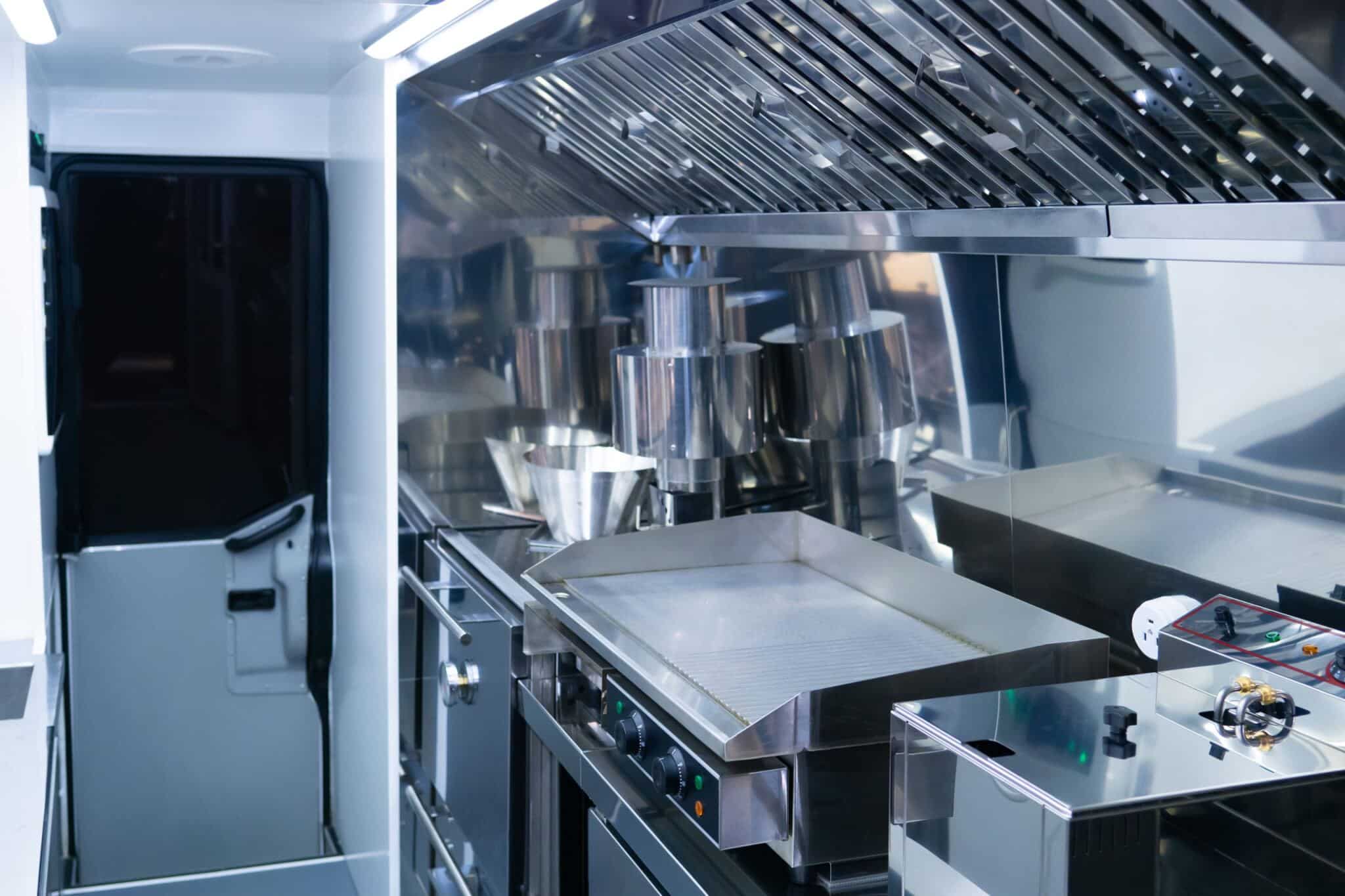In any commercial kitchen, the exhaust system plays a pivotal role in ensuring safety, air quality, and operational efficiency. Yet not all kitchens are alike. A quick-service burger outlet, a sushi restaurant, and a steakhouse each release radically different volumes of grease, vapour, and particulates into the air. This is why the design of a kitchen exhaust system must be carefully matched to the cooking processes and intensity of the kitchen it serves. When the exhaust is under-specified, airborne grease escapes capture, increasing fire risk and compliance failures. When it is over-specified, operators often incur unnecessary costs in equipment, maintenance, and energy.
Matching Exhaust Design to Cooking Intensity
The type of cooking directly determines the exhaust system’s requirements.
- Light cooking (e.g. cafés, sandwich bars, salad preparation):Mostly steam, odours, and small particulates. Exhaust canopies in these settings may require lower capture velocities and standard filtration.
- Medium cooking (e.g. restaurants with grilling, sautéing, pan-frying): Significant grease vapour, smoke, and steam are generated. Canopies must have greater overhang, stronger extraction rates, and baffle or honeycomb filters.
- Heavy cooking (e.g. steakhouses, fast-food fryers, wok kitchens): Large volumes of grease-laden vapour and particulates demand high-capacity fans, fire-rated ducting, multi-stage filtration, and more frequent cleaning intervals.
A system designed for one profile may not be appropriate for another. For example, a canopy sized for a small café will be overwhelmed in a high-output grill kitchen, leaving airborne grease to condense on ceilings, ductwork, and surfaces.
Key Design Considerations
- Canopy Size and Position Effective canopies must cover the full footprint of cooking appliances with sufficient overhang (typically 150–300 mm) to capture rising plumes. Poorly sized canopies are one of the most common reasons for inefficiency.
- Capture Velocity and Airflow Air volume must be high enough to draw vapour and particulates into the canopy but balanced against energy efficiency and noise. For heavy-duty cooking, airflow requirements can exceed 100 cubic metres per minute per metre of canopy.
- Filtration Baffle and honeycomb filters are standard. Baffles typically capture 80–90% of grease particles, while honeycombs can reach 90–95%. High-efficiency filters must be specified where grease and smoke loads are high.
- Ducting Duct length, profile, and bends all influence grease deposition. Straight runs with smooth surfaces are preferable. Rectangular ducts are common in retrofits, but circular ducts reduce turbulence and can reduce grease accumulation.
- Exhaust Fans Fans must be sized to maintain steady airflow despite resistance from filters and duct length. Backward-inclined or centrifugal fans are most common for grease-laden environments.
- Fire Safety Features Automatic fire suppression, fire-rated ducting, and regular access panels are essential safeguards. They allow fires to be contained and ducts to be cleaned effectively.
Risks with Change of Use
One of the most overlooked risks in exhaust management arises when a kitchen changes ownership or shifts its menu focus. A system originally specified for a café producing light steam and odours may be inherited by a new operator installing deep fryers or chargrills. In such cases, the system is often out of sync with the cooking intensity—an exhaust sized for salads and paninis cannot safely handle the grease loads of steaks and chips.
This mismatch increases the risk of grease-laden air bypassing filters and condensing inside ductwork, creating a continuous fuel source. Fire risk escalates, and cleaning costs rise sharply. In many jurisdictions, insurance cover may be jeopardised if the exhaust system is not suited to the cooking type in use.
Advice for Operators Considering a Change of Use
Operators acquiring or repurposing a kitchen should:
- Commission a professional assessment of the exhaust system before commencing operations.
- Compare cooking intensity against system capacity (airflow, canopy sizing, filtration, and duct design).
- Upgrade where necessary—especially filters, airflow capacity, and fire suppression.
- Document compliance to satisfy insurers and regulators.
What may seem like a “working” system can in reality be a dangerous liability if it was never designed for the increased cooking load.
Conclusion
An exhaust system is not just a piece of background infrastructure; it is a frontline defence against fire, smoke, odour, and compliance breaches. Its design must always reflect the nature and intensity of cooking in the kitchen. Equally important, when kitchens change ownership or shift menus, operators must re-examine whether the system still aligns with the new reality. A mismatch is more than inefficient. It is a direct risk to safety, business continuity, and reputation.

